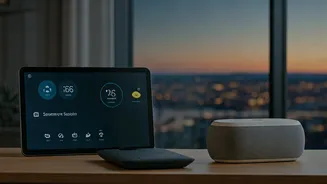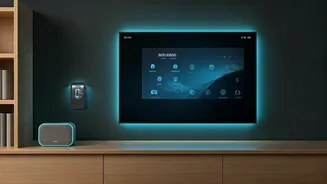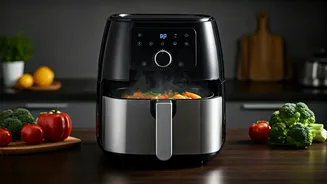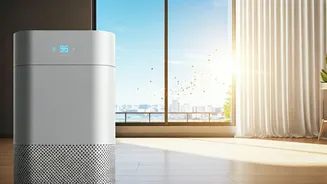Smart Home Foundations
The concept of a smart home has evolved significantly over time, transitioning from a futuristic notion to a practical reality. At its heart, a smart home revolves
around interconnectivity – the ability of various devices to communicate with each other and be controlled remotely. Central to this concept are smart assistants, which act as the control hubs for these interconnected devices. These assistants leverage voice control and intuitive interfaces to manage everything from lighting and temperature to security systems and entertainment. This integration streamlines daily routines and offers enhanced convenience. Smart home technology utilizes Wi-Fi, Bluetooth, and other wireless protocols to enable this seamless interaction. Furthermore, a smart home often incorporates security systems, environmental monitoring devices, and automation tools, all designed to enhance comfort, security, and efficiency.
Smart Assistants: The Brains
Smart assistants have become indispensable components of the modern smart home. These devices, typically activated by voice commands, serve as the central command centers for managing numerous home functions. Through integrated microphones and speakers, these assistants can receive instructions, execute tasks, and provide information. The primary function of a smart assistant involves managing and controlling other smart devices, like smart lighting, thermostats, and smart locks. For example, a simple command like, "Turn on the living room lights", can be easily executed through a smart assistant. Smart assistants also facilitate the automation of daily routines. Users can set up schedules and triggers to automate tasks. Besides these control functions, smart assistants deliver a variety of services, like playing music, providing weather updates, setting alarms, and answering general knowledge queries. This versatile functionality makes them essential for anyone seeking a more connected and efficient living experience.
Security and Safety Systems
Smart home technology significantly enhances home security. Advanced security systems, often controlled via a smartphone app, provide peace of mind through a range of features. These systems typically incorporate components such as door and window sensors, motion detectors, and surveillance cameras. When triggered, these sensors alert homeowners of potential intrusions, allowing for immediate action. Many systems can also integrate with professional monitoring services, providing 24/7 security support. Another element of smart home security includes smart locks. These locks eliminate the need for traditional keys, offering keyless entry through codes, key fobs, or even biometric authentication. Surveillance cameras, particularly those equipped with features like two-way audio and night vision, enable homeowners to monitor their property remotely. Integrating these technologies can also improve the overall safety and security of a home, especially with features like environmental monitoring, which can detect potential hazards such as water leaks, smoke, or carbon monoxide.
Environmental Monitoring Devices
Smart home technology extends beyond security to improve the environmental quality within a home. Indoor air quality monitors are a crucial element in maintaining a healthy living environment. These devices continuously track pollutants like dust, pollen, and volatile organic compounds (VOCs). By monitoring these levels, users can take corrective actions, such as using air purifiers or improving ventilation. Home weather stations are another useful aspect of environmental monitoring. These stations provide localized weather data, including temperature, humidity, and wind speed. This information can be used to manage other smart home devices like smart thermostats and sprinkler systems, helping to optimize energy use and water consumption. Moreover, smart blinds and shades can be integrated to automatically adjust based on sunlight and temperature, thus maintaining a comfortable living space.










